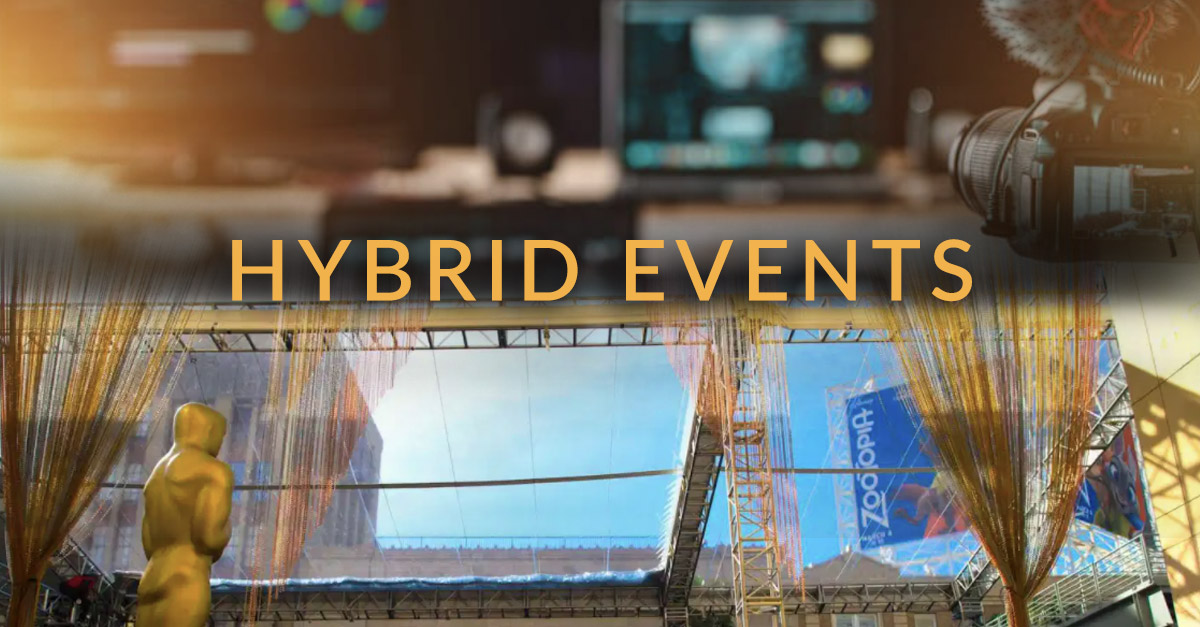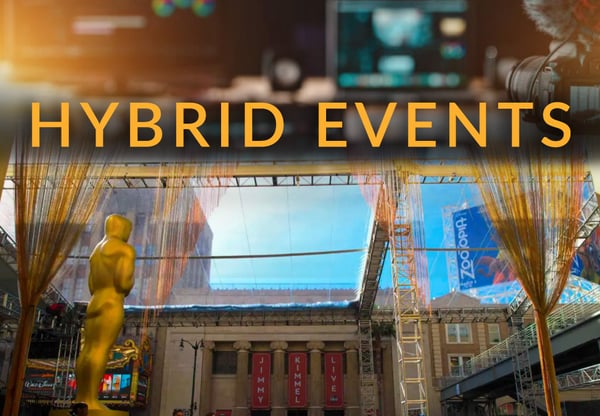Almost 50% of Corporate Event Attendees Consider Hybrid Events the Ideal Format for the Future
Since 2020, the event industry migrated from in-person events to virtual events — speakers, event planners and companies had to scramble to adapt and pivot towards the adoption of better technology solutions to connect and interact with an online audience. Since 2021, in-person events began to shift back towards in-person events, with people expecting that the world might “normalize” and go back to way it was before. However, with the global COVID-19 pandemic experiencing a recent resurgence due to the Delta variant, the new normal means there will continue to be people who are reluctant, or are unable, to attend in-person events.
Almost 50% of corporate event attendees consider hybrid events the ideal format for the future, compared to exclusively in-person or virtual-only events, according to Metrigy Research. Businesses are embracing this new reality. In 2021, 64% of businesses say they’re increasing their virtual events, and 58% say they’re planning for a mix of virtual and in-person events.
To better meet everyone’s needs, the hybrid event model has become a very popular solution and is definitely here to stay.
But first, you must understand what a hybrid event is, and what it is not.
WHAT IS A HYBRID EVENT?
A hybrid event is a meeting or event with at least one group of
in-person participants connecting with remote participants in one or more different locations.
WHAT A HYBRID EVENT IS NOT
• A live streamed in-person event
• A live event with on-demand content
• An in-person event with a virtual add-on
Is a hybrid event right for you? Take a look at your audience needs and your objectives to make that determination. A hybrid event is highly personalized for both in-person and virtual audiences and is designed to drive action and exploration.
STEP 1: PREPARING FOR YOUR HYBRID EVENT
Determine your hybrid event configuration
- What hybrid configuration will you use and what level of communication will there be – see some examples below:
- Live main event + virtual participants
- Live main event + 1-way pod
- Studio + 2-way pods
1-way=1-way broadcast stream
2-way=real time 2-way communication
Know your event goals and objectives
- Determine the needs of your online group(s)
- What do you hope to achieve from an online component?
-
- How will you measure your online effectiveness?
-
- Determine how to effectively engage your audience
- Think like a TV producer – how can you engage your online participants and create an exclusive experience
- Consider a host or emcee to facilitate communications with your remote attendees
STEP 2: DESIGNING YOUR HYBRID EXPERIENCE
Plan & Design your hybrid experience
- Determine how the in-person speaker or (or remote) will address the online audience and work in moments of engagement
- Speakers need to be careful not to walk or pace on stage. The camera movement can cause motion sickness for remote viewers
- Have extra rehearsals to prepare for extra latency or “lag” time for online or video connections
- If you poll your online audience about a topic, there may some space and time required to get answers back. Prepare for this by sharing a funny story or anecdote to your in-person audience before checking in with the online participants
STEP 3: TECHNOLOGY FOR HYBRID EVENTS
Determine what technology you will use
- Ensure you have proper cameras, microphones, lighting
- Incorporate stage lighting so speakers look their best to online viewers
- Ensure the data flow between a powerful laptop, desktop computer or stand-alone piece of hardware
- Get a reliable streaming provider
- Have your digital venue setup and ready – this is where the online attendees will login to watch and interact with the event
- Ensure minimum requirements for the online event and communicate a backup plan for them, just in case
- Provide dedicated support staff or facilitator/emcee
- It is most effective to have hard-wired internet connection
- Test, Test, Test
- Ensure a backup plan if technology fails
STEP 4: VENUES & BUDGETING
Venues
- Choose your in-person venue carefully – make sure it has room for clear, unrestricted camera angles
- Tip #1: Never stream on wi-fi; use hard-wired internet
- Tip#2: Consider using a riser for the speaker to be raised up slightly so that cameras can get a clear angle
- Determine your online platform that has features such as Q&A, chat, live polling, online agendas, etc.
Online Budgeting Considerations
- Be wary of “Free.” Functionality may be limited and they may sell your attendee’s data to other marketers
- Expensive doesn’t always mean better. Look for quality platforms that have a good record of customer services and high ratings
- Factor in the costs of hard-wired internet
- Quality microphone, lighting and camera kits can be built for less than the price of some table centerpieces at events
- Provide staffing for your online event, with at least one person dedicated to monitoring the remote user experience
- Determine which platforms serve your goals and objectives better
Although there are some challenges to a hybrid event model, this is an incredible way to offer global reach to people who otherwise might not attend, create partnerships and even drive traffic to your in-person event. Offer a combination of creative in-person media, virtual reality and on-demand content and your next hybrid event is sure to be a success!




